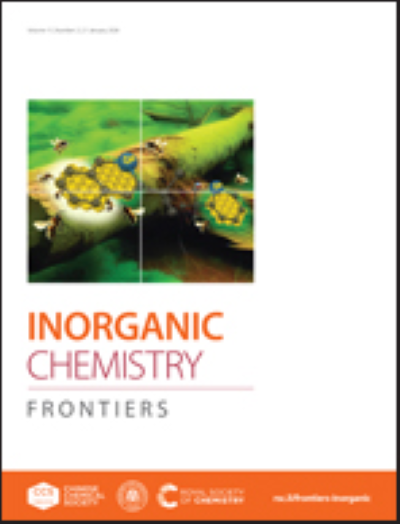Multiple Interfaces Coupling Triggered Built-in Electric Field over Double-Sandwiched RGO/Cobalt silicate/Cobalt-Iron Phosphide for Improving Overall Water-Splitting Performance
IF 6.1
1区 化学
Q1 CHEMISTRY, INORGANIC & NUCLEAR
引用次数: 0
Abstract
The exploration of efficient and durative bifunctional electrocatalysts for overall water splitting (OWS) is critical for hydrogen production in clean energy applications. Herein, a novel double-sandwiched architecture of reduced graphene oxide (rGO), cobalt silicate (CS), and cobalt-iron phosphides, denoted as rGO/CS/(Co,Fe)xPy, is designed to enhance both oxygen evolution reaction (OER) and hydrogen ER (HER) in alkaline media. The formation of Co2P and Fe2P on rGO/CS not only protects the silicate from alkaline corrosion but also generates dual-active centers that synergistically improve conductivity and catalytic activity. Multiple interface coupling between rGO, CS, and (Co,Fe)xPy triggers a built-in electric field, which significantly enhances charge separation, electron transport, and reaction kinetics. This built-in electric field lowers the energy barrier for HER by facilitating H-OH bond dissociation and accelerates OER by promoting OH⁻ adsorption. The rGO/CS/(Co,Fe)xPy catalyst achieves overpotentials of 256 mV (OER) and 180 mV (HER) at 10 mA·cm–2, surpassing most reported catalysts and rivaling commercial Pt/C and RuO2. Furthermore, the rGO/CS/(Co,Fe)xPy (+/-) demonstrates a low OWS voltage of 1.41 V. The current work provides a new approach to catalyst design through interface engineering and electric field optimization, offering a scalable solution for sustainable hydrogen production.求助全文
约1分钟内获得全文
求助全文
来源期刊

Inorganic Chemistry Frontiers
CHEMISTRY, INORGANIC & NUCLEAR-
CiteScore
10.40
自引率
7.10%
发文量
587
审稿时长
1.2 months
期刊介绍:
The international, high quality journal for interdisciplinary research between inorganic chemistry and related subjects
 求助内容:
求助内容: 应助结果提醒方式:
应助结果提醒方式:


